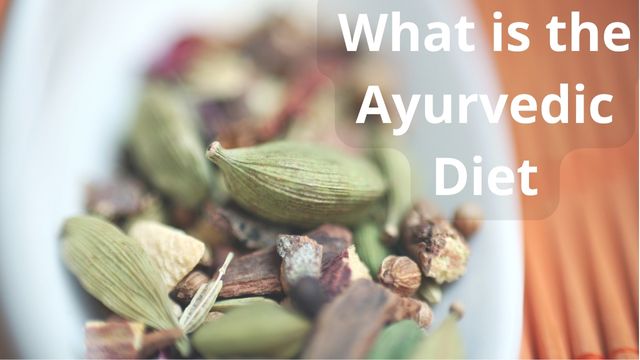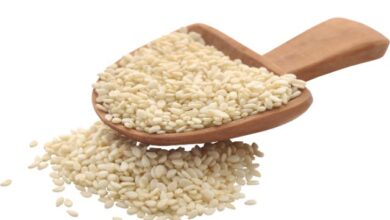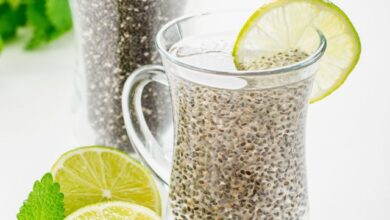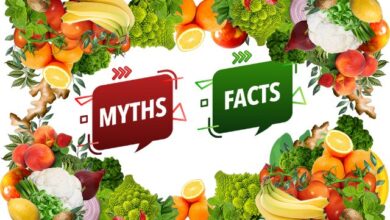What is the Ayurvedic Diet? A Dietitian Explains the Centuries Old Eating Philosophy

The Ayurvedic diet is more than just a way of eating; it’s a centuries-old philosophy deeply rooted in the principles of balance and well-being. Originating in ancient India, Ayurveda is a holistic system that encompasses not only what you eat but also how you live and interact with the world around you. In this comprehensive guide, we will delve into the fascinating world of Ayurveda and the principles that underlie the Ayurvedic diet. Let’s explore how this ancient philosophy can guide us toward optimal health and well-being in our modern lives.
What is Ayurveda?
Ayurveda, often referred to as the “science of life” or the “knowledge of longevity,” is an ancient system of medicine and wellness that originated in India over 5,000 years ago. This holistic approach seeks to establish balance within the body, mind, and spirit. Ayurveda recognizes that every individual is unique, and what works for one person may not work for another. The ultimate goal of Ayurveda is to promote overall health and well-being by aligning your lifestyle, including your diet, with your unique constitution or dosha.
How Does It Work?
Based on your dosha, or body type, the Ayurvedic diet is a form of eating regimen that specifies when, how, and what foods you should eat.
To assist you in choosing the dosha that most closely resembles you, the following are some of its primary characteristics:
- Pitta (Fire + Water)
- Vata (Air + Space)
- Kapha (Earth + Water)
Pitta (Fire + Water)
Intelligent, diligent, and tenacious. This dosha typically has a medium physical build, a short fuse, and may be afflicted with diseases like heart disease, high blood pressure, or indigestion.
Vata (Air + Space)
Vibrant, active, and creative. When out of balance, this dosha, which is typically associated with thin, light-framed people, may cause problems with digestion, weariness, or anxiety.
Kapha (Earth + Water)
Naturally composed, solid, and devoted. A Kapha dosha person typically has a stronger constitution and may struggle with diabetes, asthma, depression, or weight gain.
This diet states that the things you should eat to encourage inner harmony depend on your dosha.
For instance, the pitta dosha restricts spices, nuts, and seeds and prioritises cooling, energising foods.
While avoiding dried fruits, pungent herbs, and raw vegetables, the vata dosha prefers warm, moist, and grounding foods.
Last but not least, the kapha dosha discourages the consumption of heavy foods like nuts, seeds, and oils in favour of fruits, vegetables, and legumes.
For all three doshas, it is forbidden to consume red meat, artificial sweeteners, and processed foods. The Ayurvedic diet, on the other hand, promotes consuming wholesome, healthful foods.
Benefits Of The Ayurvedic Diet
Here are some pros of The Ayurvedic Diet:
- Promotes mindfulness
- Encourages whole foods
- Could promote weight loss
Promotes Mindfulness
The Ayurvedic diet also heavily emphasises awareness in addition to the meals you eat.
The practise of mindfulness entails being acutely aware of your current feelings.
The focus of mindful eating is on reducing distractions during meals so that you may concentrate on the flavour, texture, and aroma of your food.
A tiny 10-person study found that mindful eating decreased body weight, depression, stress, and binge eating.
Additionally, mindful eating may improve self-control and foster a positive relationship with food.
Encourages Whole Foods
The Ayurvedic diet promotes the consumption of whole foods such fruits, vegetables, grains, and legumes despite having particular recommendations for each dosha.
Due to the abundance of important nutrients in these foods, this can considerably improve your health.
Additionally, processed foods, which frequently lack fibre and vital vitamins and minerals, are minimised in the diet.
According to studies, consuming more processed foods may increase your risk of developing heart disease, cancer, and even passing away.
As a result, the Ayurvedic diet may aid in preventing chronic illness and fostering greater health. However, more research is required.
Could Promote Weight Loss
The Ayurvedic diet may aid in weight loss since it places an emphasis on entire foods that are nutrient-rich.
Even though there isn’t much study on the Ayurvedic diet and weight loss, certain studies have suggested that it might be useful in this area.
For instance, one study found that following the Ayurvedic diet for three months resulted in significant weight loss in 200 patients with pitta or Kapha doshas. These individuals are allegedly heavier than those with Vata doshas.
Following an Ayurveda-based lifestyle modification programme, which included dietary adjustments and yoga lessons, led to an average weight loss of 13 pounds (6 kg) over the course of nine months, according to another small study .
To assess the effectiveness of the Ayurvedic diet for weight loss in the general population, however, substantial, high-quality studies are required.
Downsides Of The Ayurvedic Diet
Here are some cons of The Ayurvedic Diet:
- Often subjective
- Can be confusing
- May feel overly restrictive
Often Subjective
The Ayurvedic diet has a problem in that it’s arbitrary.
Your dominant dosha, which is based on a number of physical and mental characteristics, is what the diet is all about.
Even though there are many instructions and online tests available to make the process easier, determining your dosha is not always accurate.
Making the wrong choice for your dosha could have a negative effect on your results because the food guidelines are specific to each dosha.
Furthermore, there is currently no evidence to back up the idea of doshas or the assertion that the foods you should consume and stay away from are based on your personality.
Therefore, even if you accurately identify your dosha, it’s uncertain how healthy the diet is.
Can Be Confusing
The Ayurvedic diet has many drawbacks, one of which is that it can be complex and challenging to adhere to.
There are numerous additional guidelines to follow in addition to the specific dietary lists for each dosha.
For instance, depending on the season, suggestions for what foods to consume and what to avoid alter throughout the year.
There are also recommendations regarding when, how frequently, and how much should consume, which can be difficult particularly for individuals who are just beginning the programme.
May Feel Overly Restrictive
Depending on your dosha, there are lengthy lists of foods on the Ayurvedic diet that you should eat or avoid.
This may entail avoiding certain food groups or healthful, whole meals that are known to irritate particular doshas.
You might need to significantly alter your existing diet because other components like red meat or processed foods are also excluded.
This may make it difficult to maintain the diet over the long run because it feels too restrictive and is less flexible than other meal plans.
Foods To Eat In The Ayurvedic Diet
According to Ayurveda, meals are grouped according to their physical characteristics and how they are thought to effect your body. This assists in determining which compounds are most effective for certain doshas.
According to your unique dosha, some of the things you should eat are listed below.
Pitta
- Proteins: modest amounts of tofu, egg whites, and chicken as sources of protein
- Dairy: butter, ghee, and milk
- Fruits, including sweet, ripe fruit such as oranges, pears, pineapples, bananas, melons, and mangoes.
- Vegetables: bitter and sweet vegetables, such as Brussels sprouts, cabbage, cauliflower, celery, cucumber, and zucchini, as well as leafy greens.
- Legumes: kidney beans, black beans, lima beans, mung beans, chickpeas, lentils, and lentils
- Grains: wheat, oats, barley, and basmati rice
- Nuts and seeds: trace amounts of coconut, flax, sunflower, and pumpkin seeds
- Herbs and Spices: Small amounts of black pepper, cumin, cinnamon, cilantro, dill, and turmeric are among the herbs and spices.
Vata
- Protein: A few servings of tofu, fish, and fowl for protein
- Dairy: Milk, butter, yoghurt, cheese, and ghee are dairy foods.
- Fruits, such as bananas, blueberries, strawberries, grapefruit, mangoes, peaches, and plums, that are fully ripe, sweet, and heavy.
- Vegetables: steamed vegetables such as green beans, beets, sweet potatoes, onions, radishes, turnips, and carrots.
- Legumes: mung beans, lentils, and chickpeas
- Grains: cooked rice and oats
- Nuts and Seeds: Almonds, walnuts, pistachios, chia seeds, flax seeds, and sunflower seeds are just a few of the nuts and seeds you can eat.
- Herbs and Spices: Cardamom, ginger, cumin, cloves, basil, oregano, thyme, and black pepper are among the herbs and spices.
Kapha
- Protein: Seafood, poultry in moderation, and egg whites all include protein.
- Milk: goat milk, soy milk, and skim milk
- Fruits include apples, pears, blueberries, cherries, pomegranates, and dried apricots, figs, and prunes.
- Vegetables include asparagus, okra, leafy greens, onions, potatoes, and mushrooms.
- Legumes: Any type of legumes, such as navy beans, chickpeas, lentils, and black beans
- Grains: Oats, rye, buckwheat, barley, corn, millet, and other grains
- Nuts and seeds: trace amounts of flax, pumpkin, and sunflower seeds
- Herbs and Spices: Any herbs or spices, such as thyme, basil, oregano, black pepper, turmeric, ginger, and cumin are acceptable.
Foods To Avoid In The Ayurvedic Diet
Depending on your dosha, you should limit or avoid eating some of the following items.
Pitta
- Proteins include red meat, seafood, and egg yolks.
- Milk products: buttermilk, cheese, and sour cream
- Fruits, include tart or under ripe varieties of grapes, apricots, papaya, grapefruit, and sour cherries
- Vegetables: eggplant, beets, tomatoes, onions, and Chilli peppers
- Grains: rye, corn, millet, brown rice, and
- Nuts and Seeds: Almonds, cashews, peanuts, pine nuts, pistachios, walnuts, and sesame seeds are some of the nuts and seeds.
- Herbs and spices: any spices that aren’t on the previous list.
Vata
- Red meat is a protein.
- Fruits: dry, immature, or light fruits including cranberries, pears, pomegranates, and raisins
- Any raw vegetable as well as cooked broccoli, cabbage, cauliflower, mushrooms, potatoes, and tomatoes are considered to be veggies.
- Beans such as black beans, kidney beans, and navy beans are examples of legumes.
- Buckwheat, barley, rye, wheat, corn, quinoa, millet are among the grains.
- Spices and herbs: astringent or bitter herbs include coriander seed, thyme, and parsley.
Kapha
- Proteins: egg yolks, shrimp, and red meat
- Fruits include fresh figs, bananas, coconuts, and mangoes.
- Vegetables: cucumbers, tomatoes, zucchini, and sweet potatoes
- Beans: kidney beans, soybeans, miso
- Rice, wheat, and cooked cereal are grains.
- Cashews, pecans, pine nuts, Brazil nuts, sesame seeds, and walnuts are some examples of nuts and seeds.
- Liquid Diet For Weight Loss- A Knowledgeable Report
- Best Ayurvedic Remedies For The Treatment Of COVID 19
- Ayurveda Advice: 8 Immunity Booster Ayurvedic Herbs, A Report
Tailoring Your Diet to Your Dosha
The Ayurvedic diet is not a one-size-fits-all approach. Instead, it’s a personalized way of eating that considers your dosha, the season, and your current state of balance or imbalance. Here are some general guidelines for each dosha:
At the heart of Ayurveda are the three doshas: Vata, Pitta, and Kapha. These doshas are fundamental energies that exist in every living being, and they govern various physiological and psychological functions. Understanding your predominant dosha is key to tailoring the Ayurvedic diet to your individual needs. Here’s a brief overview of each dosha:
1. Vata: Vata is associated with qualities like dryness, coldness, and lightness. It governs bodily functions related to movement, such as breathing and circulation. People with a Vata constitution tend to be creative, energetic, and enthusiastic when in balance. However, an excess of Vata can lead to anxiety, restlessness, and digestive issues.
- Emphasize warm, cooked, and grounding foods like soups, stews, and grains.
- Include sweet, sour, and salty tastes to balance Vata’s dry and cold qualities.
- Minimize raw, cold, and dry foods, as well as excessive caffeine and sugar.
2. Pitta: Pitta is characterized by qualities like heat, intensity, and sharpness. It controls metabolic processes, digestion, and the body’s ability to transform food into energy. Those with a Pitta constitution are often determined, focused, and intelligent. When Pitta is imbalanced, it can manifest as irritability, inflammation, and skin issues.
- Favor cooling and hydrating foods like cucumbers, melons, and leafy greens.
- Include sweet, bitter, and astringent tastes to counter Pitta’s heat and intensity.
- Limit spicy, hot, and fried foods, and avoid overeating.
3. Kapha: Kapha embodies qualities of heaviness, coldness, and stability. It regulates structure and lubrication in the body, such as maintaining healthy bones and joints. People with a Kapha constitution tend to be calm, compassionate, and reliable. An excess of Kapha can lead to weight gain, lethargy, and congestion.
- Opt for light and warming foods like beans, legumes, and spicy dishes.
- Include pungent, bitter, and astringent tastes to balance Kapha’s heaviness and coldness.
- Reduce dairy, heavy oils, and excessive sweets in your diet.
Eating with the Seasons
In Ayurveda, the concept of eating with the seasons is fundamental. Nature’s cycles profoundly influence our well-being, and adjusting our diet accordingly can help maintain balance. Here’s how the Ayurvedic diet aligns with the seasons:
Spring (Kapha season): During spring, the Kapha dosha tends to be aggravated. To balance this, focus on lighter, warm, and spicy foods while reducing heavy, cold, and sweet options.
Summer (Pitta season): As the weather heats up, the Pitta dosha may become imbalanced. Favor cooling foods like watermelon, cucumber, and coconut, and limit hot and spicy dishes.
Fall (Vata season): The Vata dosha tends to rise during the fall. Counteract this by incorporating warm, grounding foods like root vegetables and hearty grains, and reducing raw and cold foods.
Winter: Wintertime often increases Vata and Kapha imbalances. Embrace nourishing, warming foods such as soups, stews, and cooked grains to maintain balance.
The Importance of Mindful Eating
In Ayurveda, how you eat is just as significant as what you eat. Practicing mindful eating is an essential part of this holistic approach. Here are some key principles of mindful eating in Ayurveda:
1. Eat with gratitude: Begin your meal with a moment of gratitude. Acknowledge the effort and energy that went into producing your food.
2. Eat in a calm environment: Choose a peaceful, clean, and clutter-free space for your meals. Avoid eating in front of the TV or computer.
3. Chew your food well: Digestion begins in the mouth, and thorough chewing helps ease the digestive process.
4. Eat to satisfy, not stuff: Pay attention to your body’s hunger and fullness cues. Avoid overeating, as it can lead to digestive discomfort.
5. Sip warm water: Drinking warm water during the meal or after can aid digestion and balance your dosha.
The Ayurvedic Diet and Modern Life
While the Ayurvedic diet offers a holistic and individualized approach to eating, incorporating it into our modern lives can be a challenge. Here are some practical tips to make Ayurveda work for you:
1. Consult an Ayurvedic practitioner: Working with a qualified Ayurvedic practitioner can help you determine your dosha and receive personalized guidance.
2. Gradual transitions: If you’re new to Ayurveda, make gradual changes to your diet and lifestyle. It’s a journey, not a quick fix.
3. Balance, not perfection: Aim for balance rather than strict adherence. Enjoy the flexibility to adapt Ayurvedic principles to your daily life.
4. Listen to your body: Pay attention to how foods make you feel and adjust your diet accordingly.
5. Experiment: Ayurveda encourages experimentation to find what works best for you. Try different foods, tastes, and routines to discover your optimal balance.
Disclaimer
This article is only for study purpose. It does not claim any type of health related problems. For any type of diet plan , consult your doctor first.
People May Ask
What Is The Ancient Ayurvedic Diet?
The Ayurvedic diet is a menu plan based on the ideas of Ayurvedic medicine, an age-old system of traditional medicine. According to the diet, which is intended to promote weight loss and increase mindfulness, you must eat or refrain from consuming specific foods according on your dosha, or body type.
What Is The Philosophy Of Ayurveda?
According to ayurvedic philosophy, each person is born with a unique constitution known as their prakruti. The prakruti is thought to be an individual blend of physical and psychological traits that influence each person’s functioning and is established at conception.
What Does Ayurveda Say About Eating?
Rasa is the basis for one of Ayurveda’s classification systems for food. According to Ayurveda, there are six main tastes: sweet, sour, salty, pungent, bitter, and astringent. A substance can have both primary and secondary characteristics (guna) that improve its attributes.
Conclusion
The Ayurvedic diet is a menu plan based on the ideas of Ayurvedic medicine, an age-old system of traditional medicine.
According to the diet, which is intended to promote weight loss and increase mindfulness, you must eat or refrain from consuming specific foods according on your dosha, or body type.
It is based on subjective presumptions about your personality and body shape, which makes it confusing and limiting. In addition, there is no scientific proof to back up its ideas.



